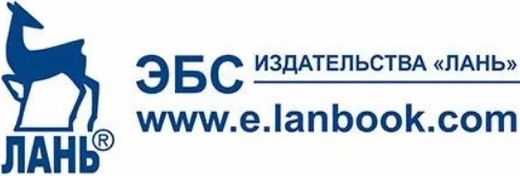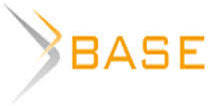Evaluation the activities of the commercial banks of the Russian federation based on the camels model
Abstract
The banking sector plays an important role not only in the economic, but also in social life of the country, since it is the main element of confidence’s evidence in the economic, but also in public policy.
The banking system has a two levelsin the organization. The first one is represented by the Central Bank of the Russian Federation and the second by commercial banks, so this article studies the second level of the banking system in Russia.
Commercial banks play basic role in the economic activities by investing in various sectors of the economy, since they consider as a broker between lenders (investors) and debtors so they are facing potential risks which try to avoid and minimize.
To determine the performance’s efficiency, banks use one of the FAS (financial American standards) – the American model CAMELS which measures the efficiency of the use of available bank’s financial resources.
Based on the indicators of the five represented banks, at the end of the article the authors compiled a rating of the most stable banks of Russia according to this model.
Keywords: economy, banking system, credit organizations, commercial bank, Central Bank, CAMELS model
Введение
The banking system plays an important role in the Russian economy. It is the central link in the monetary and credit policy of the state, since the state of the country's economy on the international arena depends on it.
The banking system assumes the existence of two subsystems. The first level is represented by the Central Bank of the Russian Federation (Bank of Russia). Its main tasks include: the issuance of money, the maintenance of stable operation of monetary policy, as well as the provision of sustainable functioning of commercial banks within the state.
The second level is represented by commercial banks and non-bank credit organizations (NCOs) of the country. The main task of credit organizations is to conduct banking operations for settlement and cash, credit and deposit services for clients and subjects of economic relations, and NCOs have the right to carry out only certain types of banking operations.
Основнаячасть
At present, the assessment of the effectiveness of commercial banks using the CAMELS model is becoming increasingly important and relevant. The CAMELS model is an American rating system for assessing US banks, developed in 1978 by the Federal Reserve System (FRS). Although the model is more used for external evaluation of the efficiency of a commercial bank, it is also useful for internal management of the bank and other interested parties.
This model consists of six elements: capital adequacy, asset quality, management, profit, liquidity and sensitivity.
С – Capital adequacy;
A – Asset quality;
М – Management;
Е – Earnings;
L – Liquidity;
S – Sensitivity.
Capital adequacy refers to the organization's compliance with the requirements for assessing net assets taking into account risks. Banks must comply with the norms and established practices of paying interest and dividends. Despite the fact that these factors strongly reflect how the bank works in relation to normative acts, it can also be viewed as a factor of efficiency and profitability.
The quality of assets shows the company's stability in the event of risks. It covers the quality of the organization's loans, which refers to the main sources of income. From an effective point of view, the quality of assets reflects the efficiency of the bank's operating activities.
The third factor assesses whether the institution can respond to the financial crisis. The ability of management to identify, measure, monitor and control risks in operations is an indicator of how an organization can safely and effectively perform its functions in the event of an emergency.
The profitability ratio measures financial results in order to expand and maintain competitiveness. The growth of the company, stability, growth of net interest margin and market value are indicators for assessing productivity and profit level.
Liquidity refers to the company's short-term financial resources and how quickly they can be converted into cash. In addition, commercial banks in accordance with the Bank of Russia need to maintain the necessary level of liquidity.
Risk sensitivity shows how some risks can affect a financial institution. This can be assessed by studying the management of the loan portfolio and finding out how much it is exposed to currency risk and the risk of delinquency. Despite the fact that this factor does not measure the internal processes of commercial banks, it still gives a fairly good idea of which areas of business processes should be considered because of the increased risk [3].
Based on these elements, we present an analysis of the adequacy ratios of the basic and total capital of commercial banks in Russia for 2017 (Table 1).
Table 1
Analysis of capital adequacy ratios of fixed and total capital of commercial banks of the Russian Federation as of 01.01.2018 [11]
Таблица 1
Анализ коэффициентов достаточности основного и совокупного капиталов
коммерческих банков РФ на 01.01.2018
№ | Name of the bank | Thecoefficientofcapitaladequacy (C1)% | Coefficientofcapitaladequacyratio (C2), % |
JSC Raiffeisenbank | 13,73 | 16,85 | |
JSC Russian Agricultural Bank | 9,27 | 10,93 | |
VTB (PC) | 11,91 | 14,26 | |
Post Bank (PC) | 9,91 | 12,4 | |
Sberbank of Russia (PC) | 14,54 | 18 | |
Optimal value | 15-20 | 25-30 | |
The top leader in increasing capital during 2017 was Sberbank of Russia (+551 billion rubles). A significant increase in capital from the largest bank in Eastern and Central Europe is associated with high profit.
Also a good result was demonstrated by attracting a large volume of subordinated loans and funds of JSC "Russian Agricultural Bank " and VTB (Public corporation). A significant increase in equity capital from these banks allowed them to strengthen their positions in the top ten [12].
In Table 1, the capital adequacy ratios and the aggregate capital adequacy ratio are considered. The capital adequacy ratio shows how much of the bank's equity is in the structure of liabilities. The higher its share, the more reliable and stable the bank operates. The coefficient of sufficient aggregate capital shows the share of fixed capital and additional capital in the total balance sheet.
On the basis of the given data in the table it can be concluded that none of the represented bank achieved the optimal value by two coefficients. This indicates a low degree of bank reliability and the need to raise borrowed capital.
The next element characterizing the CAMELS model is the quality of assets, which are presented in Table 2.
Table 2
Analysis of assets of commercial banks of the Russian Federation as of 01.01.2018 [13]
Таблица 2
Анализ активов коммерческих банков РФ на 01.01.2018
№ | Name of the bank | The volume billion rubles. | Growth of assets,% | Coefficient of protection against risk,% |
JSC Raiffeisenbank | 904,8 | 13,7 | 10,62 | |
JSC Russian Agricultural Bank | 3587,4 | 14 | -3,49 | |
VTB (PC) | 10041 | 2,8 | 2,98 | |
Post Bank (PC) | 273,1 | 96,2 | 5,92 | |
Sberbank of Russia (PC) | 24624,8 | 6,6 | 13,89 | |
Optimal value | - | - | 5< | |
The past year of 2017 turned out to be quite successful for the Russian banking sector. As a result of last year, assets of Russian banks in nominal terms increased by 6.4%. The growth rate of the assets of the Russian banking sector recovered quite quickly and allowed fully compensation for the failure in 2016.
According to the results of the research, by the end of 2017, the volume of assets of thecommercial banks represented in the table rose by at least 6.6%.
The largest increase in assets in absolute terms was observed in Sberbank, the volume of assets increased by 1.5 trillion Rubles or by 6.6% by the end of the year.
The best relative dynamics of assets among TOP-100 large credit organizations in 2017 was at the Bank Post, whose assets grew almost 2-fold, which allowed the bank to rise in the rating by 17 positions. A good result is due to an extensive network of branches, as well as aggressive advertising policy.
In the second half of 2017, the nominal dynamics of the assets of the Russian banking sector had a positive trend, which indicates positive prospects for the first half of 2018. Optimism is largely related to the expectation of growth in lending against a background of lower interest rates.
It is expected that the pace of consolidation of assets of the Russian banking sector will continue to remain at a relatively high level in 2018. First, the reviews of licenses and the rehabilitation of commercial banks have recently increased the flow of customers to the largest and most reliable banks significantly. Secondly, the reduction of rates will help large banks, since there have not be seen new relatively large niches in the banking services market, in which medium and small banks could show significant growth. In addition, the continued reduction of participants in the banking market will naturally lead to an increase in industry consolidation [4].
Table 3 provides an analysis of the coefficients that determine the management and evaluation of management practices (business activity). It characterizes the bank's ability to raise funds, and effectively and rationally place them. This element consists of a set of coefficients. Let's consider some of them:
- Coefficient of lending activity:
- Coefficient of investment activity:

- Level of resource mobilization:

Table 3
Analysis of the coefficients of business activity of commercial banks
of Russia as of 01.01.2018 [6, 7, 8, 9, 10]
Таблица 3
Анализ коэффициентов деловой активности коммерческих банков России на 01.01.2018
№ | Name of the bank | C1, % | C2, % | C3, % |
JSC Raiffeisenbank | 76,3 | 8,7 | 77,3 | |
JSC Russian Agricultural Bank | 72,1 | 11 | 83,9 | |
VTB (PC) | 66,7 | 16,4 | 79,7 | |
Post Bank (PC) | 78,8 | 0,0002 | 7,8 | |
Sberbank of Russia (PC) | 75,7 | 13,5 | 79,3 | |
Optimal value | 65-75 | <10 | 80-85 | |
On the basis of the data given, it is noted that (JSC) Raiffeisenbank and Bank Post conduct This article considers the structure of the banking system of the Russian Federation and the efficiency model of commercial banks “CAMELS”. Based on the indicators of the five banks represented , the authors compiled a rating of the most stable banks in Russia for this model an aggressive risky credit policy and insufficient diversification of assets, as the value of the credit activity ratio is more than 75%. However, in terms of investment, they pursued the least risky policy, since in the conditions of increased competition of commercial banks and unstable banking system, securities are the most high-risk instrument. The level of attracting resources characterizes the activity of the bank in attracting funds in the financial market. The low level of the value of this coefficient indicates a decrease in the bank's activity in attracting resources and, at the same time, reducing the riskiness of banking activities of the bank's stability. JSC " Bank Post " has such a low value at (7.8%).
Profitability and Earnings indicators of the "E" group determine the financial result of a commercial bank. It is the final stage in determining the effectiveness of the bank.
There are many indicators that characterize the profitability of the credit organization: return on assets, profitability of credit operations, and return on capital.
Within the framework of this group of indicators, the return on assets and the profits of five commercial banks of the Russian Federation for 2017 are shown (Table 4).
Table 4
Analysis of the volume of profit and profitability of assets of commercial banks
of Russia as of 01.01.2018 [5]
Таблица 4
Анализ объема прибыли и рентабельности активов коммерческих банков России
на 01.01.2018
№ | Name of the bank | Return on assets, % | The volume of profit, billion rubles |
JSC Raiffeisenbank | 3,5 | 29,7 | |
JSC Russian Agricultural Bank | 0,2 | 5,5 | |
VTB (PC) | 0,8 | 75,9 | |
Post Bank (PC) | 3,4 | 6,7 | |
Sberbank of Russia (PC) | 3,6 | 847,9 | |
Optimal value | 0 | - | |
It is worth noting that the year 2017 was "profitable" as a record positive monthly dynamics of profit was achieve. This article considers the structure of the banking system of the Russian Federation and the efficiency model of commercial banks “CAMELS”. Based on the indicators of the five banks represented, the authors compiled a rating of the most stable banks in Russia for this model.ved beside some negative results. In particular, at the beginning of the year, the profits of the banking sector were characterized by high growth rates, and its volume almost always exceeded 100 billion rubles, and only in three of the first eight months was below this level. In April, the profit of banks was at the level of 215 billion rubles, and thus a new historical record was set for the volume of profit for the month. On the other hand, since September, banks have stopped showing profits. In September, a record monthly loss of $ 322 billion was observed. At the same time, not only did September become unprofitable for the Russian banking sector in 2017, but December was characterized by a negative financial result (-81 billion rubles).
Thus, the year 2017 was a year of contrasts, when the banking sector simultaneously showed profit and loss records, which is generally more negative and indicates a significant crisis in the banking sector.
The return on assets of the Russian banking sector in 2017 showed a moderately negative result by the standards of recent years. So for the 12 months ended January 1, 2018, return on assets (ROA) was 0.97% compared to 1.15% at the beginning of 2017 (0.25% in 2015).
Thus, the financial recovery of the three banking groups (Bank FC Opening, Banks Group BIN, Promsvyazbank) quite strongly affected the return on assets. It should be noted that in August, when the profit of the banking sector was at its peak, the profitability of banks' assets was 1.74%.
The most profitable bank in Russia in absolute terms, as well as during all the last 20 years, was Sberbank, which in 2017 earned a profit of 848 billion rubles, that is 27% more than a year earlier. The main factors influencing Sberbank's good results are the growth of net interest expenses (mainly due to a decrease in the cost of funding), the growth of commission income, and the growth of income from operations with securities. The second in terms of absolute profit before tax last year was VTB Bank, whose financial result amounted to 76 billion rubles, which is more than an order of magnitude lower than the result of the leader.
Furthermore, to assess commercial banks fully using the CAMELS model, it is necessary to consider the liquidity ratios (Table 5):
L1 is designed to assess the level of the "first-line reserve";
L2 serves to estimate the level of the "reserve of the second stage";
L3 characterizes the required level of highly liquid assets in the balance sheet structure;
L4 assesses the bank's ability to simultaneously settle all its obligations;
L5 characterizes the balance of the bank's active and passive policies to achieve optimal liquidity.
Table 5
Analysis of the liquidity ratios of commercial banks in Russia as of 01.01.2018 [6, 7, 8, 9, 10]
Таблица 5
Анализ нормативов ликвидности коммерческих банков России на 01.01.2018
№ | Name of the bank | L1, % | L2, % | L3, % | L4, % | L5, % |
JSC Raiffeisenbank | 6,93 | 10,26 | 5,85 | 7,58 | 117,4 | |
JSC Russian Agricultural Bank | 8,35 | 16,18 | 6,53 | 7,79 | 275,05 | |
VTB (PC) | 2,61 | 6,80 | 4,9 | 6,15 | 100,15 | |
Post Bank (PC) | 10,53 | 10,53 | 10,16 | 13,11 | 132,21 | |
Sberbank of Russia (PC) | 6,36 | 13,49 | 6,24 | 7,86 | 222,15 | |
Optimal value | 3-7 | 8-12 | 12-15 | 15-20 | 100 | |
On the basis of the data given in the table, it can be seen that only 2.61% of the incoming resources of VTB (PJSC), attracted for the term deposits and on demand accounts, are provided with first-class liquidity while the other commercial data banks are above or within the norm. In addition, the L2 coefficient is below the norm, so the resource base of this bank is not stable, and a sufficient amount of incoming funds are not provided with first-class liquid funds.
The coefficients L3 and L4 of the presented banks are below the optimal value, which indicates the insufficient possibility of the bank's assets to be exchanged for cash and that the recommended value of attracted funds (at least 15%) is not covered by highly liquid assets.
The optimal value of the liquidity ratio L5 is 100% (the classical ratio of current assets and current liabilities is 1: 1). However, this ratio in the submitted banks is more than 100%, which indicates that the income of commercial banks exceeds expenditures.
The optimal value of the liquidity ratio L5 is 100% (the classical ratio of current assets and current liabilities is 1: 1). However, this ratio in the submitted banks is more than 100%, which indicates that the income of commercial banks exceeds expenditures.
Thus, with the help of the analysis done, it is possible to determine the rating of the most stable banks of Russia for 2017 (Table 6).
Table 6
Rating of the most stable banks of Russia according to CAMELS model 01.01.2018
Таблица 6
Рейтинг наиболее устойчивых банков России по модели CAMELS на 01.01.2018
№ | Name of the bank | Points |
JSC Raiffeisenbank | 9 | |
JSC Russian Agricultural Bank | 6 | |
VTB (PC) | 5 | |
Post Bank (PC) | 8 | |
Sberbank of Russia (PC) | 10 |
Source: compiled by the authors on the findings of the study
The most stable commercial banks as of 01.01.2018, presented in the table, are PJSC Sberbank and Raiffeisenbank, which received 10 and 9 points, respectively. Next to them is PJSC "PostBank", which scored 8 points according to the rating. Banks with the lowest score are Russian Agricultural Bank and VTB (PC).
It should be noted that a variety of rating agencies use the CAMELS methodology with other approaches. Therefore, when analyzing, it is worth to rely not only on numbers, but also on professional judgments. The main advantage of the method is the complex nature of the assessment of the credit structure, based on a reasoned judgment of banking supervision specialists.
This methodology is easy to understand, and the results that were obtained with it through the process of assessing the reliability of a commercial bank can be used not only by bank specialists, but also by potential clients of the bank.
After a detailed review of the adapted CAMELS methodology, the following conclusions were drawn. First, with the help of this system, the level of stability of individual entities of the financial system and of the entire financial sector of a country as a whole is examined. Secondly, with its help, capital adequacy, asset quality, and other components of the CAMELS methodology for the financial sector (the banking system) as a whole are assessed [2].


















Reference lists
Vladyka M.V., Vaganova O.V., Kucheryavenko S.A., Bykanova N.I., (2016).Analysis of efficiency indicators of a macro region's economy (on the example of the central federal district) // The Social sciences (Pakistan). 2016. Vol. 11(15). P. 3728-3733.
Vladyka. M.V., Burdinskaya. D.M., Gorbunova. E.I. , (2017). Development of methods of state banking regulation and supervision: federal and regional aspects of reforming // Fundamental research. 2017. No. 2. Pp. 114–119.
2. Isaeva. E.A., Bukhtuev. K.A., Nekhorosheva. M.A., (2016). Analysis of the reliability of commercial banks using the CAMEL rating system // Economics and modern management: theory and practice. 2016. No. 56. Pp. 35-43.
3. Seliverstov A.V., (2017). Model Camels – system for assessing the effectiveness of commercial banks / / Alley of Science. 2017. Vol. 2. No 9. Pp. 605-608.
4. Rating of the largest banks in Russia by assets – results of 2018 [Electronic resource] // «RIA Rating» URL:http://riarating.ru/banks/20180207/630081913.html (date of access: March, 31 2018).
5. Rating of the largest Russian banks in terms of profitability as of January 1, 2018 [Electronic resource] // «RIA Rating» URL: http://vid1.rian.ru/ig/ratings/b_profit_0118.pdf (date of access: March, 31 2018).
6. Camels Sberbank of Russia [Electronic resource] // Portal of the bank analyst URL: http://analizbankov.ru/bank.php?BankId=sberbank-rossii-1481&BankMenu=camels (date of access: March, 31 2018).
7. Camels Raiffeisenbank [Electronic resource] // Portal of the bank analyst URL: http://analizbankov.ru/bank.php?BankId=rayffayzenbank-3292&BankMenu=camels(date of access: March, 31 2018).
8. Camels PostBank [Electronic resource] // Portal of the bank analyst
URL: http://analizbankov.ru/bank.php?BankId=pochta-bank-650&BankMenu=camels (date of access: March, 31 2018).
URL: http://analizbankov.ru/bank.php?BankId=rossel-hozbank-3349&BankMenu=camels (date of access: March, 31 2018).
10. Camels Vtb [Electronic resource] // Portal of the bank analystURL: http://analizbankov.ru/bank.php?BankId=vtb-1000&BankMenu=camels (date of access March, 31 2018).
11. Rating of banks by volume of capital as of January 1, 2018 [Electronic resource] // «RIA Rating»URL: http://vid1.rian.ru/ig/ratings/banki_07_01_18.pdf (date of access: March, 31 2018).
12. Rating of banks by the volume of equity capital on January 1, 2018 [Electronic resource] / / «RIA Rating» http:// «RIA Rating» URL:riarating.ru/banks/20180222/630083713.html (date of access: March, 31 2018).